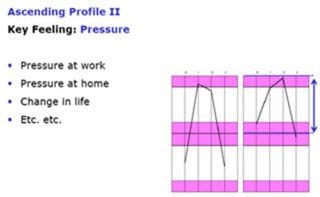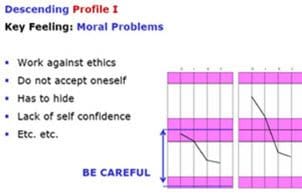Interpreting Extended DISC Reports - Shifting ProfilesWritten on the 30 April 2014 by EDA & Talent Tools ) Shifting of Profiles tell us “how the person is feeling”.With Extended DISC Profiles, the shape of the profile tells who the person is, and the position and size of the profile tells about how they are feeling at the time of completing the questionnaire. This means that if you are dealing with a current "issue or circumstance" you need a current report. This also relates to the use of Profile I, as it is indicating the behaviour that they percevied they need/ed to demonstrate to the successful in the current (at the time of completing the questionnaire) role and environment. As a rule of thumb: If you are using the size, position of the profile/s, or if you are using Profile I you will need a current report. If you are only using the shape of Profile II, then an older report is usually fine, as the shape of Profile II does not usually move out of their flexibility zone. This information is often used as discussion openers that help the candidate open up and start talking about the feelings that are most disturbing in the present situation. The special cases should never be used as a comprehensive psychological or psychiatric analysis, they are just topic hints that could well be worth discussing.
|






